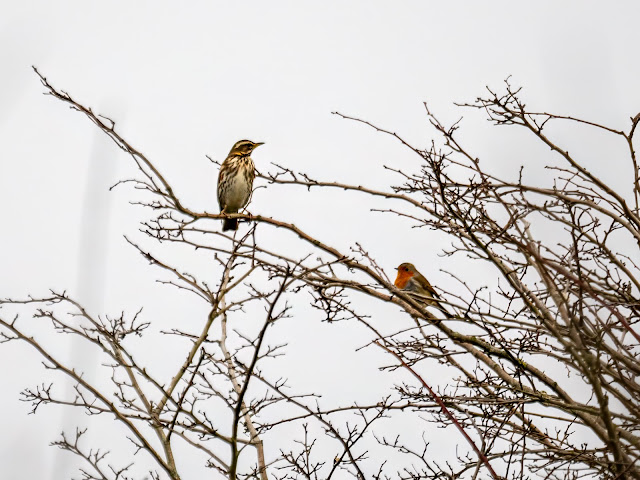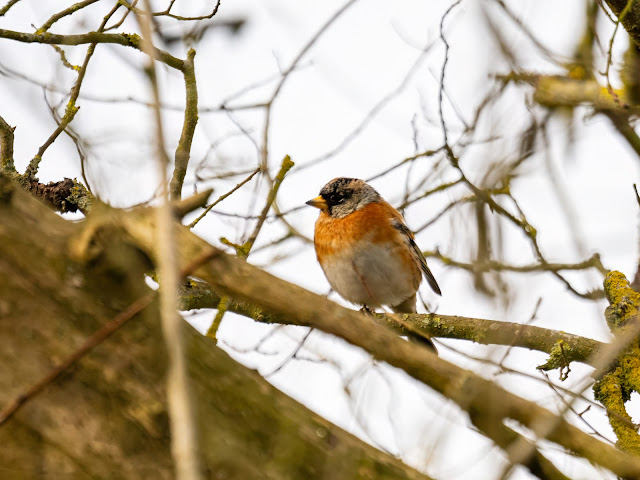EWT Blue House Farm is a 242.8 hectare nature reserve and farm in North Fambridge on the north bank of the River Crouch between Burnham-on-Crouch and South Woodham Ferrers in Essex. It is managed by the Essex Wildlife Trust.
Most of EWT Blue House Farm was originally saltmarsh until sea walls were constructed to capture land from the sea. It was then used as grazing pasture for cows and sheep and this practice continues today. Some of the higher, drier fields were used for crops but have now reverted to grassland. The site includes marshland, ponds, creeks and ditches, reedbeds and a 20 hectare field is flooded during the winter to provide feeding grounds for large numbers of wildfowl and wading birds.
The wildlife of EWT Blue House Farm is internationally important, particularly for over-wintering birds (most notably around 2000 Dark-bellied Brent Geese) but also breeding Avocets, Lapwings, Common Redshanks, Skylarks, Meadow Pipits and Yellow Wagtails. It is also an important site for spring and autumn passage waders plus Water Voles, Brown Hares, butterflies, insects and coastal plants.
EWT Blue House Farm is a working farm managed by maintaining high water levels and balancing livestock farming with wildlife conservation.
Access is only available via a permissive footpath through the farm, which has 3 bird hides along it, or along the sea wall.
Having arrived at North Fambridge railway station, I walked down to the reserve entrance. En-route, I heard “mewing” Common Buzzards and eventually saw a pair of birds soaring and kettling. I saw what were presumably the same 2 birds later over the reserve plus another 3 birds soaring distantly from Round Marsh Hide
During my visit, I only walked as far as Round Marsh Hide and back. I therefore did not complete the long circular walk taking in the River Crouch seawall.
On the reserve, I eventually located the Ruddy Shelduck associating with a group of Barnacle Geese. However, it was a very distant telescope view looking directly into the sunlight plus the bird kept disappearing behind the geese. Fortunately, it later reappeared on Round Marsh, again with the Barnacle Geese, where the directional sunlight was better although again it was a telescope view.
This was my third UK record of Ruddy Shelduck in addition to birds seen at EWT Abberton Reservoir, Essex on 4th September 2011 and at RSPB Frampton Marsh, Lincolnshire on 8th September 2019. Whether any of these birds are truly wild vagrants is debatable.
In addition to the Ruddy Shelduck, I also saw my first Chiffchaff of the year, taking my 2025 UK and Essex year lists to 113 species and 98 species respectively. Given the date, I am not sure if this was an over-wintering Chiffchaff or a very early spring migrant.
The highlights from my visit were as follows: Ruddy Shelduck (1), Shelduck (at least 100), Teal (at least 100), Shoveler (at least 50), Wigeon (at least 50), Pintail (at least 20), Gadwall (at least 20), Mallard (8), Dark-bellied Brent Goose (at least 200), Barnacle Goose (at least 20), Canada Goose (at least 100), Greylag Goose (1), Lapwing (at least 200), Golden Plover (at least 200), Dunlin (at least 100), Curlew (at least 75), Avocet (at least 35), Ringed Plover (5), Oystercatcher (3), Grey Heron (6), Common Buzzard (5), Red Kite (1), Kestrel (2), Marsh Harrier (1 male), Stock Dove (2), Chiffchaff (1), Cetti’s Warbler (1 male heard singing but unseen), Skylark (at least 5 including singing males), Reed Bunting (singing male, female plus another singing male heard), Meadow Pipit (at least 5), Linnet (3), Greenfinch (3), Pied Wagtail (1), Rook (20 at least in the “rookery” in the village)
In addition, I saw 4 Rabbits.
My trip concluded with a late lunch at the Ferry Boat Inn.
Love nature .... act now
.jpg)











































